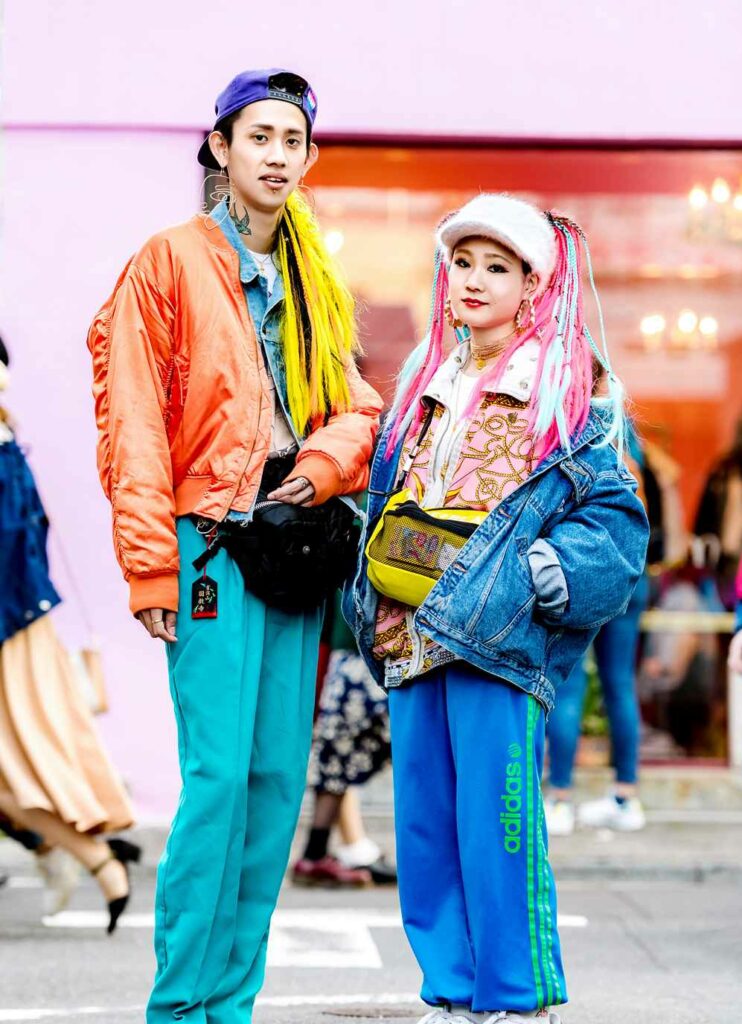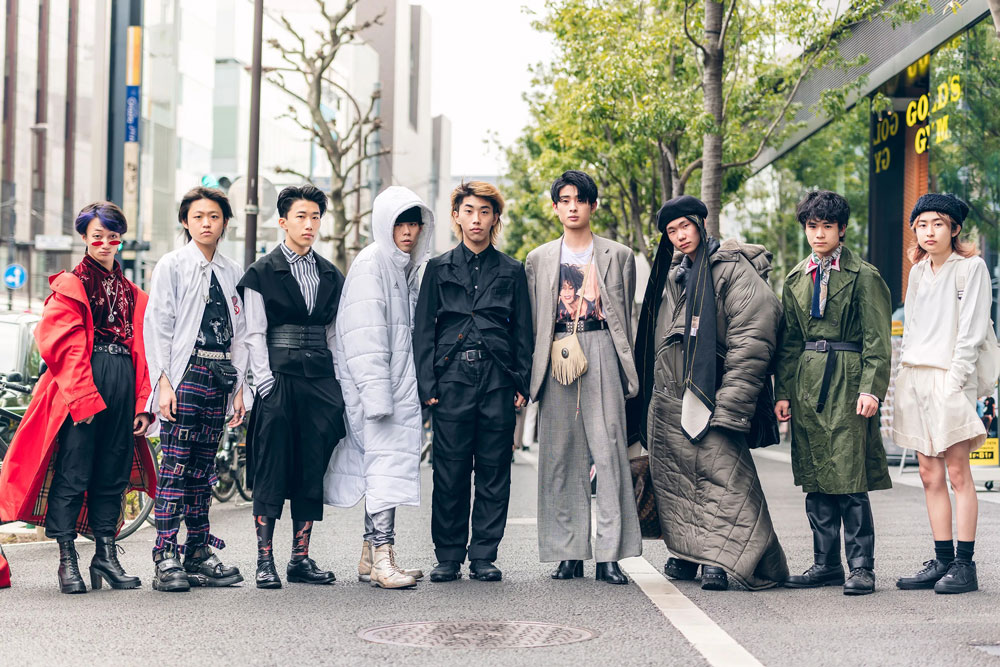In a world of ever-changing fashion trends, the Japanese clothing style is an exquisite and timeless art form, captivating the global fashion scene with its harmonious blend of tradition, innovation, and elegance. Rooted in a rich cultural heritage, Japanese fashion draws upon centuries of history and artistic expression to create unique ensembles that resonate with modern sensibilities. From the iconic kimono to avant-garde streetwear, Japanese clothing style inspires and influences the fashion industry worldwide. If you are redesigning your wardrobe and need to earn extra money for it – just visit the https://www.playamo.com/ja platform.
Historical Influences
Japanese clothing style has deep historical roots that reflect the nation’s reverence for tradition and craftsmanship. People have been wearing kimonos, perhaps the most iconic representation of Japanese fashion, for over a millennium. The garment’s graceful silhouette, intricate patterns, and luxurious fabrics symbolize Japan’s cultural values of refinement, modesty, and harmony with nature.

Over time, the kimono has evolved to embrace modern designs, allowing it to be adapted to various occasions and personal styles.

The Elegance of Simplicity
One defining characteristic of Japanese clothing style is its emphasis on simplicity. The Japanese have a profound appreciation for clean lines, subtle details, and muted colours, showcasing a minimalist approach that exudes sophistication. The concept of “wabi-sabi,” which appreciates the beauty of imperfection and impermanence, is often mirrored in the choice of materials and patterns. This blend of elegance and understatement is a hallmark of Japanese clothing and has significantly influenced contemporary fashion worldwide.
While rooted in tradition, Japanese fashion is also known for its cutting-edge, avant-garde designs. The streets of Tokyo, particularly in the Harajuku district, are a vibrant showcase of bold experimentation and artistic expression. Harajuku fashion encompasses a myriad of styles, from “Lolita,” which borrows elements from Victorian and Rococo fashion, to the futuristic “Cyberpunk” aesthetic, characterized by metallic and neon elements.
Contemporary Japanese designers have achieved international acclaim, blending traditional elements with modern innovation. Brands like Issey Miyake, Yohji Yamamoto, and Comme des Garçons have revolutionized the global fashion landscape with their avant-garde creations, featuring innovative draping techniques, unconventional silhouettes, and experimental fabrics.

The Influence on Global Fashion
Japanese clothing style has made a lasting impact on the global fashion industry, inspiring designers and enthusiasts worldwide. Western fashion designers have frequently drawn inspiration from Japanese aesthetics, incorporating elements such as asymmetry, origami-like folds, and kimono-inspired cuts into their collections. Additionally, the concept of “kawaii” (cuteness) has gained popularity beyond Japan’s borders, with its influence evident in various fashion subcultures.

The widespread appreciation for Japanese fashion is also fueled by popular culture. Japanese anime and manga have introduced diverse fashion styles to a global audience, giving rise to trends like “cosplay,” where enthusiasts dress up as their favourite characters. Moreover with impeccable attention to detail.
Sustainability and Craftsmanship
Japanese clothing style places great emphasis on craftsmanship and quality, which has naturally aligned with the growing global interest in sustainable fashion. People have preserved traditional textiles and production techniques, offering an alternative to mass-produced, fast-fashion garments. The meticulous craftsmanship involved in creating a kimono, for example, often requires the skills of highly trained artisans and can take weeks to complete. This focus on quality and durability encourages a more mindful and sustainable approach to fashion consumption.

Japanese clothing styles reflect the country’s culture, values, aesthetics, and societal norms. Garments are designed to cover the body gracefully, emphasizing modesty and respect, creating a sense of mystery and allure. The Japanese clothing style exudes a certain sense of formality and propriety. Moreover, even in casual wear, which sets it apart from other global fashion trends.
Various Styles of Traditional Japanese Garments
Traditional Japanese garments are not only limited to the kimono. There are various styles of traditional clothing, each serving different purposes and occasions. People commonly wear yukatas, a lighter and more casual version of the kimono, during summer festivals and events. On the other hand, people wear hakama, a wide-legged pleated trouser usually paired with a kimono, on formal occasions such as weddings and ceremonies.

One essential aspect of Japanese clothing style is the use of symbolism through patterns and colours. Every element in a traditional garment holds significant meaning. For example, cranes represent longevity and good fortune, while cherry blossoms signify beauty and the fleeting nature of life. The choice of colours is equally important, with specific hues being associated with different seasons or emotional expressions.
In recent years, there has been a growing movement to preserve and promote traditional Japanese clothing. Many young designers and artisans have dedicated themselves to reviving ancient weaving techniques and dyeing methods, such as “shibori” (tie-dyeing) and “sashiko” (decorative stitching). By infusing modern elements into these traditional crafts, they create innovative pieces that cater to contemporary tastes while keeping the essence of Japanese clothing alive.
Traditional Elegance and Modern Streetwear Fusion
While traditional attire remains cherished, modern Japanese clothing style also includes a wide range of fashion genres. It caters to various subcultures and age groups. The “salaryman” (white-collar worker) style, characterized by dark suits, ties, and formal attire, represents a sense of professionalism and conformity often associated with the business world. In contrast, “gyaru” fashion, popular among young women, embraces a more playful and flamboyant look with colourful hair, tanned skin, and stylish outfits.

One element that sets Japanese streetwear apart is its emphasis on functionality and comfort. Many streetwear brands prioritize practicality and incorporate innovative features. Therefore making them popular among urban dwellers who seek fashion that complements their busy lifestyles. Sportswear and utilitarian designs often merge seamlessly with urban aesthetics. Therefore resulting in a unique blend of fashion and functionality.
The Rise of Genderless and Androgynous Fashion in Japan
Japanese fashion also embraces genderless and androgynous styles, challenging traditional norms of dress and identity. This inclusive approach to fashion allows individuals to express themselves freely, transcending gender boundaries and societal expectations.

Japanese fashion’s influence goes beyond apparel. Traditional footwear like “geta” and “tabi” are modernized by designers. Japanese clothing embraces diverse aesthetics, from timeless elegance to avant-garde street fashion. With simplicity, quality craftsmanship, and cultural symbolism, it inspires globally. Therefore, the allure of Japanese style reminds us of the beauty in tradition and innovation in fashion’s dynamic world.


















































